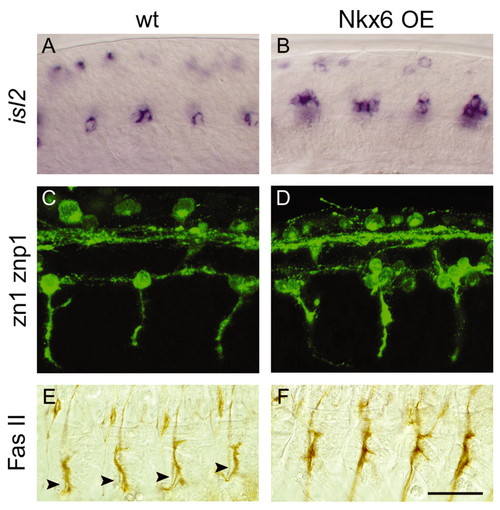
Nkx6 function is conserved between fish and flies. (A) isl2-positive CaPs and VaPs in an18 hpf zebrafish embryo. isl2-positive RBs are out of focus. Wild-type embryos have 1.3±0.7 isl2-positive motoneurons per spinal hemisegment (n=5). (B) 18 hpf embryo ectopically expressing Nkx6 (fly gene, Nkx6 OE) RNA with supernumerary isl2-positive cells (2.3±0.3 isl2-positive cells per hemisegment), similar to the phenotype caused by ectopic expression of zebrafish nkx6.1 RNA (compare with Fig. 7B). The number of isl2-positive motoneurons is significantly different (P<0.0003). (C) PMNs in 24 hpf wild-type embryo labeled with zn1 and znp1; RBs and several axon tracts are also visible. (D) 24 hpf embryo ectopically expressing Nkx6 (fly gene) RNA generates ectopic PMNs (compare with Fig. 7D). (E) Stage 17 wild-type fly embryo stained with Fas II. Arrowheads indicate SNb nerves. (F) sca>Nkx6.1 (fish gene) fly embryos with visibly thicker SNb nerves (88%, n=42 hemisegments). (A-D) Lateral views of zebrafish spinal cord. (E,F) Dissected fly embryo musculature. Scale bar: 50 μm for A,B; 33 μm for C-F.
|

